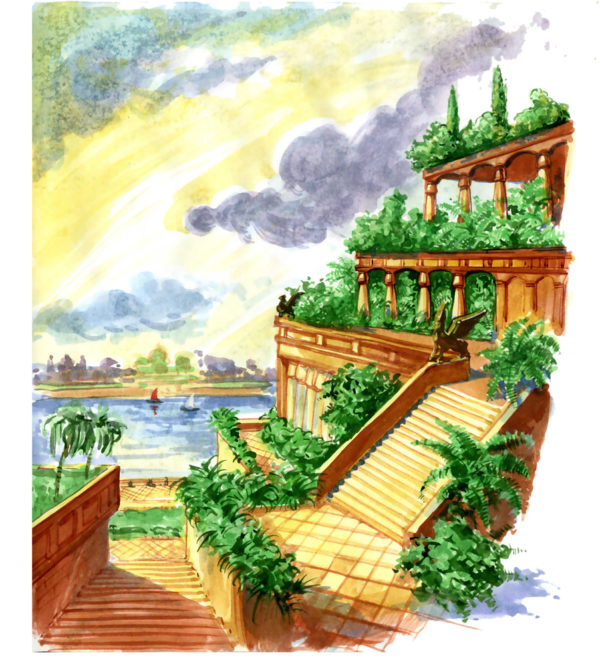
The seven wonders of the ancient world were a selection of exceptional pieces of architecture and art in the Middle East, North Africa and southern Europe.
A number of ancient and medieval writers from Europe and Middle East debated and described what are today called the seven “wonders” of the world (not all writers used the term “wonder” to describe them). The ancient Greek writer Herodotus, who lived from 484 to 425 B.C., was one of the earliest writers to discuss them, and while his writings on the wonders did not survive, they were referenced in later texts.
The wonders that should be included in the list were debated over millennia, with different authors proposing different sites. The list that we have today “only became fixed in the Renaissance,” archaeologists Peter Clayton and Martin Price wrote in the book “The Seven Wonders of the Ancient World” (Routledge, 1988).
The Hanging Gardens of Babylon
According to legend, the sixth-century B.C. Babylonian king Nebuchadnezzar II had a colossal maze of waterfalls and dense vegetation incorporated into his palace for his wife, Amytis of Media, who missed her lush homeland in Persia. However, archaeologists still debate whether the garden really existed.
The gardens were described by several ancient writers. “The approach to the garden sloped like a hillside and the several parts of the structure rose from one another tier on tier, the appearance of the whole resembled that of a theatre,” the ancient Greek historian Diodorus Siculus wrote in the first century B.C.
“Writer Fuel” is a series of cool real-world stories that might inspire your little writer heart. Check out our Writer Fuel page on the LimFic blog for more inspiration.

